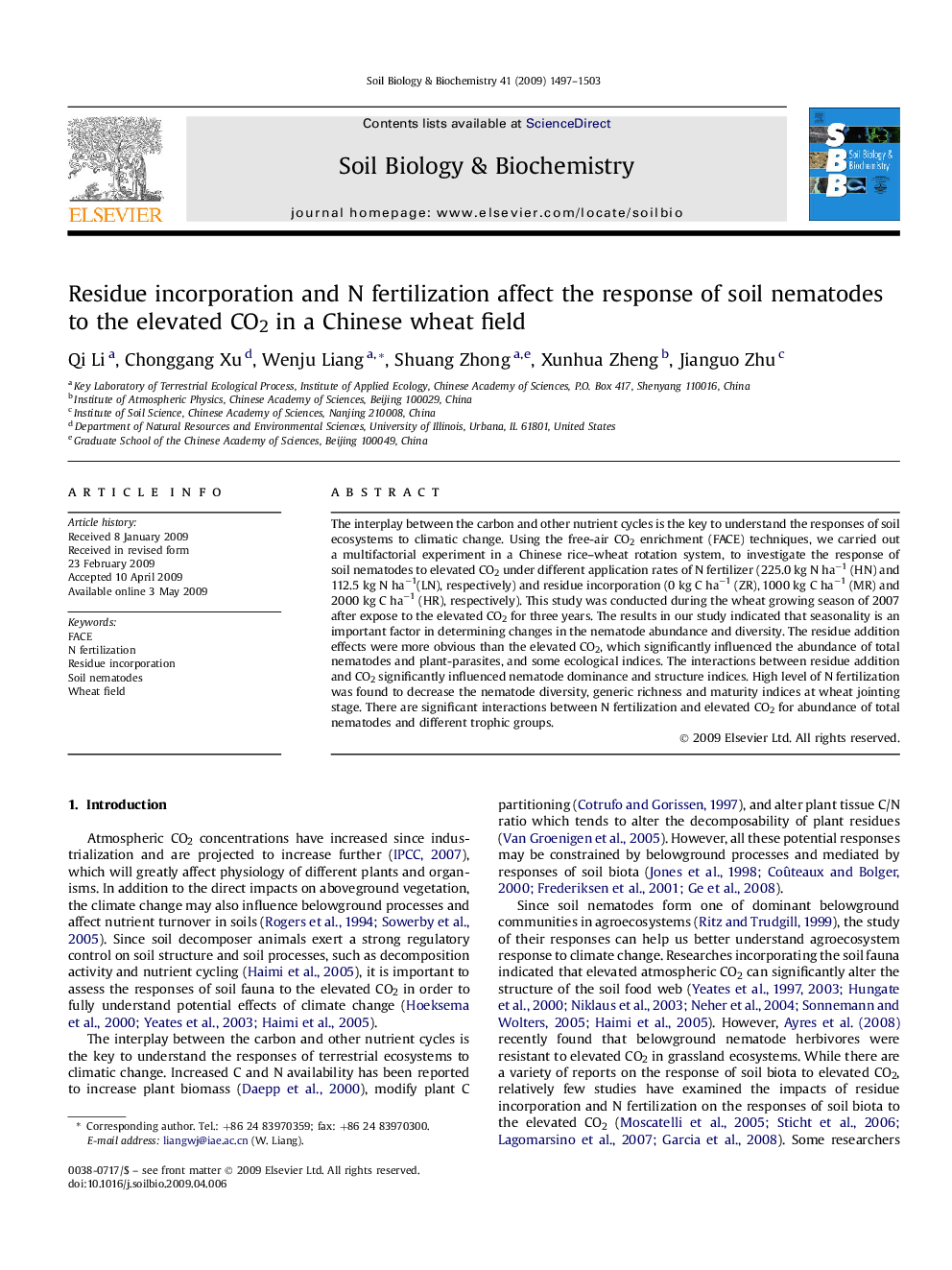| Article ID | Journal | Published Year | Pages | File Type |
|---|---|---|---|---|
| 2025213 | Soil Biology and Biochemistry | 2009 | 7 Pages |
The interplay between the carbon and other nutrient cycles is the key to understand the responses of soil ecosystems to climatic change. Using the free-air CO2 enrichment (FACE) techniques, we carried out a multifactorial experiment in a Chinese rice–wheat rotation system, to investigate the response of soil nematodes to elevated CO2 under different application rates of N fertilizer (225.0 kg N ha−1 (HN) and 112.5 kg N ha−1(LN), respectively) and residue incorporation (0 kg C ha−1 (ZR), 1000 kg C ha−1 (MR) and 2000 kg C ha−1 (HR), respectively). This study was conducted during the wheat growing season of 2007 after expose to the elevated CO2 for three years. The results in our study indicated that seasonality is an important factor in determining changes in the nematode abundance and diversity. The residue addition effects were more obvious than the elevated CO2, which significantly influenced the abundance of total nematodes and plant-parasites, and some ecological indices. The interactions between residue addition and CO2 significantly influenced nematode dominance and structure indices. High level of N fertilization was found to decrease the nematode diversity, generic richness and maturity indices at wheat jointing stage. There are significant interactions between N fertilization and elevated CO2 for abundance of total nematodes and different trophic groups.
